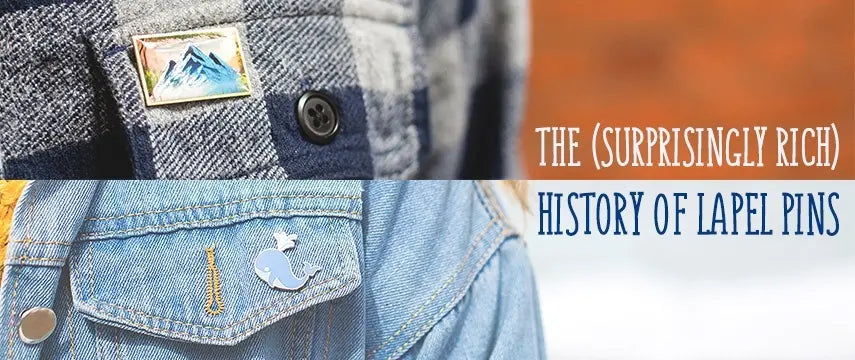At PinSource, we’re the worldwide expert in lapel pins, but how did they evolve into a vehicle for identity and self-expression? Let’s dive into their rich history, which goes back centuries and across countries!
It’s unknown who actually created the first lapel pins, but we do know that a design process that’s often used in creating them, called “inlaying,” was invented by (as far as we know) the ancient Egyptians in 1800 BC. The Egyptians would embed colorful enamel-like materials on top of a typically copper base, and then secure those layers together using soldered wire.
By the 13th century BC, the Greeks had put their own spin on the inlaying process, using colorful powdered glass to fill cells that were made by soldered wire. They would then put the pieces into a fire to produce beautifully decorative objects.
Other countries took to inlaying as well: it was popular in 13th-century China, during the Yuan Dynasty. Artists and craftsmen made fired enamel items. Inlaying rose in popularity during the Xuan De period of 1426-2435, when relics of ornate enamelware products, that looked similar to pins, were created.
Flashing forward to the introduction of lapel pins in the U.S., they first became prominent during the Civil War. Originally, these pins were worn by all soldiers as a unit marker. This made it easy to quickly organize large amounts of troops in the field. While at first they were worn simply for ease of identification and organization, the pins quickly became a source of pride among the troops. Wearing them reinforced the ideas of unification and camaraderie among each side, at a time of strong division for the nation.
In World War I, the role of lapel pins changed. Instead of being used to indicate troops’ unit affiliation, the pins were given to individuals in recognition of bravery and exemplary commitment to service. This practice continues to this day. Honorary pins are often a source of great pride for servicemen and women, and are frequently handed down the line, from generation to generation.
Following the War, lapel pins and button badges became a popular way for people to display their affiliation with political or social groups. This became particularly prevalent in the 1960s. During the turmoil and uncertainty of the Civil Rights era, they became common emblems indicating strong affiliation with, or against, the movement for social and civil equality.
During the late 1970s and 1980s, this trend re-emerged. Like pretty much everything in the 80s, however, pins were less about making any sort of significant statement and more about the fad of accumulating as many as possible.Today, pins are worn for a variety of reasons, from just being an accessory to being used as a means of recognition. Many organizations and individuals come to PinSource to create their own unique lapel pins.
As a pin company, it’s interesting to look back at how the use of lapel pins has changed over the years. Even more interesting is that their particular use at any given moment in history bears a vague reflection of the times themselves.
It’s only a matter of speculation what the current generation’s choice in pins will say about them, but if history has shown us anything, it will likely be a fair representation. We’ve seen many pins adorning backpacks, jackets and hats, and expect that number to grow! The popularity of lapel pins doesn’t seem to be waning.
If learning about how lapel pins become mainstream was of interest to you, and you’re interested in having unique, custom-made pins created for your organization, get in touch with us today!

